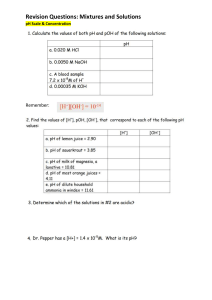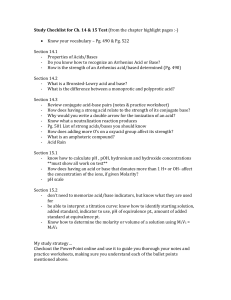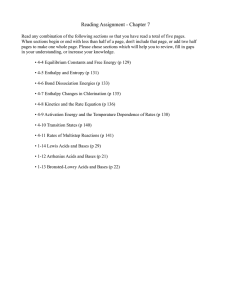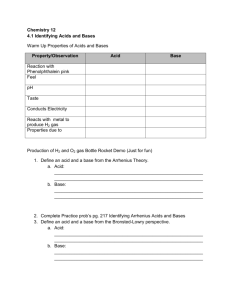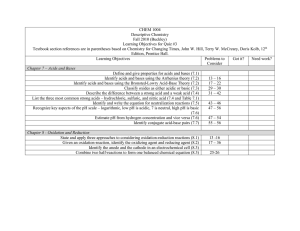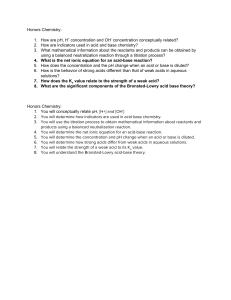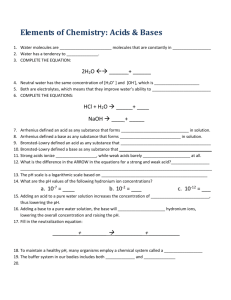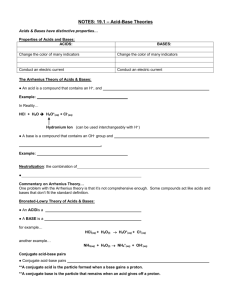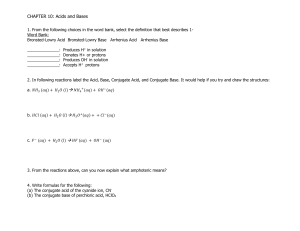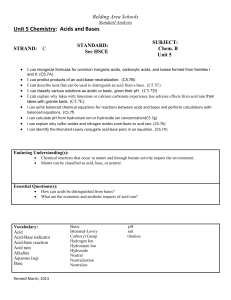Modern Chemistry Chapter 3 Atoms: the Building Blocks of Matter
advertisement
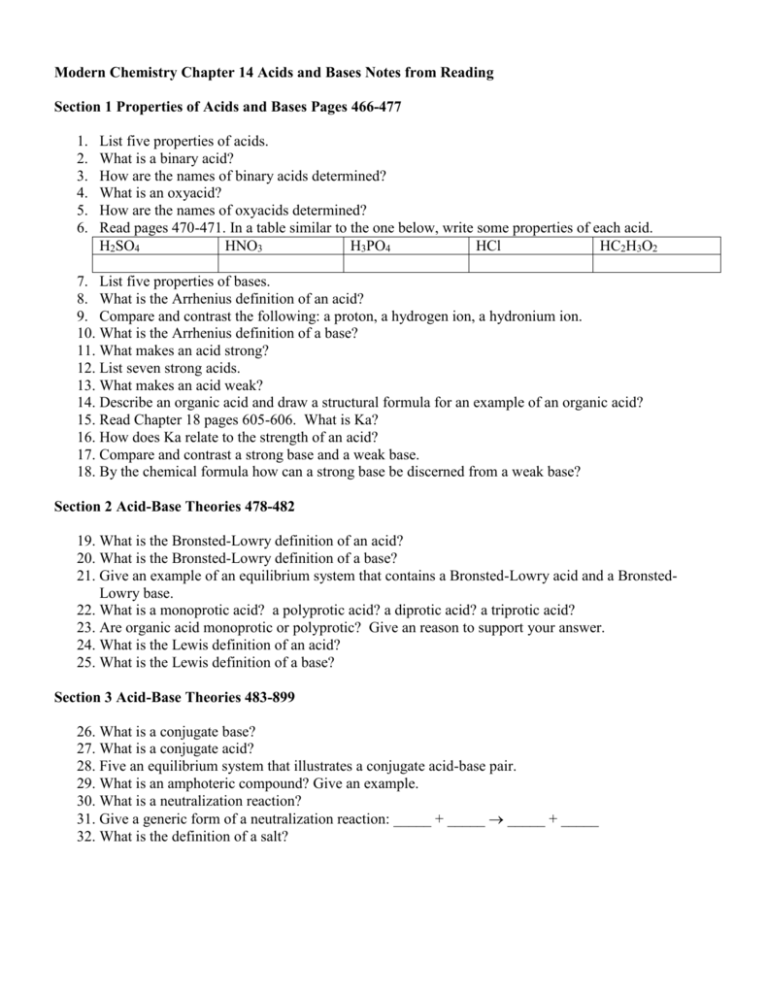
Modern Chemistry Chapter 14 Acids and Bases Notes from Reading Section 1 Properties of Acids and Bases Pages 466-477 1. 2. 3. 4. 5. 6. List five properties of acids. What is a binary acid? How are the names of binary acids determined? What is an oxyacid? How are the names of oxyacids determined? Read pages 470-471. In a table similar to the one below, write some properties of each acid. H2SO4 HNO3 H3PO4 HCl HC2H3O2 7. List five properties of bases. 8. What is the Arrhenius definition of an acid? 9. Compare and contrast the following: a proton, a hydrogen ion, a hydronium ion. 10. What is the Arrhenius definition of a base? 11. What makes an acid strong? 12. List seven strong acids. 13. What makes an acid weak? 14. Describe an organic acid and draw a structural formula for an example of an organic acid? 15. Read Chapter 18 pages 605-606. What is Ka? 16. How does Ka relate to the strength of an acid? 17. Compare and contrast a strong base and a weak base. 18. By the chemical formula how can a strong base be discerned from a weak base? Section 2 Acid-Base Theories 478-482 19. What is the Bronsted-Lowry definition of an acid? 20. What is the Bronsted-Lowry definition of a base? 21. Give an example of an equilibrium system that contains a Bronsted-Lowry acid and a BronstedLowry base. 22. What is a monoprotic acid? a polyprotic acid? a diprotic acid? a triprotic acid? 23. Are organic acid monoprotic or polyprotic? Give an reason to support your answer. 24. What is the Lewis definition of an acid? 25. What is the Lewis definition of a base? Section 3 Acid-Base Theories 483-899 26. What is a conjugate base? 27. What is a conjugate acid? 28. Five an equilibrium system that illustrates a conjugate acid-base pair. 29. What is an amphoteric compound? Give an example. 30. What is a neutralization reaction? 31. Give a generic form of a neutralization reaction: _____ + _____ _____ + _____ 32. What is the definition of a salt?
